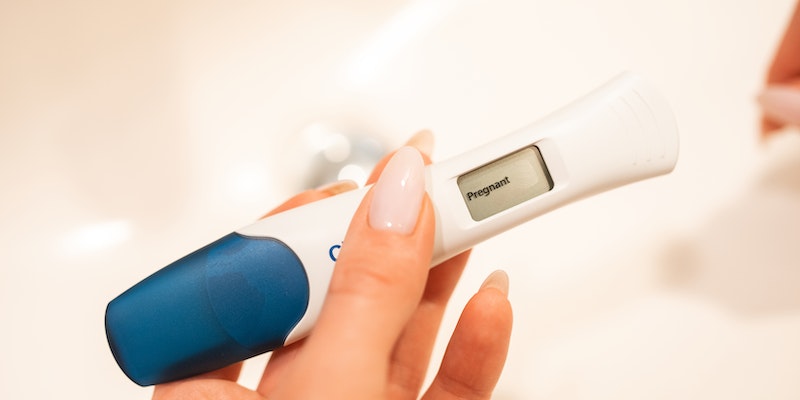Gender Selection: Is it Possible Through IVF?
Dec 10, 2023 By Nancy Miller
As you prepare for a family, you'll undoubtedly consider how many kids you want and what gender they could be. But can you pick the gender of your baby with IVF? So, let's explore the science underlying determining whether a child will be a boy or a girl and the only approach to guarantee a desired gender.
While Legacy does not equate the terms gender and sex, we are using colloquial terms for clarity. In the following article, discussing having a boy or a girl means having a kid with either XY or XX chromosomes.
Some parents are content with whatever gender their infant is, while others would prefer to choose the gender if given the opportunity. With IVF, this option is available.
The initial phase in sex selection, also known as gender selection or family balancing, is determining whether a baby will become a male or a female.
For emotional and medical reasons, parents may want to know the sex of their child.
Finding out the gender of a fetus can make it more likely to grow and develop generally since some diseases only affect one sex. Meanwhile, many things go into a couple's choice about what gender to give their child, but one of the most important is the chance that genetic diseases won't be passed on.
PGT (Preimplantation Genetic Testing)
Preimplantation genetic testing (PGT) is a way to determine if an embryo is a boy or a girl before the doctor places it in the uterine lining. The doctor performs PGT by looking at the DNA of the embryo. Only healthy eggs of the chosen sex are put into a woman during an embryo transfer.
Advantages of PGD
Most parents' primary concern is for the well-being of their embryos, but there are other advantages that gender selection gives:
- It gives time to prepare for the child.
- First-born gender selection
- Striking a balance in the family
Gender Selection
We use gender selection and sex selection interchangeably. For others, having a kid of the opposite sex after having multiple children of the same sex is a way to "balance the books" in their family.
The reproductive medical community currently only accepts and uses one of the two primary ways of gender selection. Until they are proven effective, it is best to disregard other alternative beliefs concerning diet and other techniques.
Because men and females have various chromosomal combinations based on sex, segregation is feasible based on sex. The XX chromosome pair is exclusive to females, while the XY chromosome is found only in males. One can pick the sex of their kid by selecting sperm with a desired number of X or Y chromosomes or embryos with XX or XY chromosome pairs. The option to choose a gender is not a standalone feature. Preimplantation Genetic Testing in combination with In Vitro Fertilization is now the gold standard for sex selection.

Working on the Process
Here is the breakdown of the cycle in seven stages:
Day 1-4
Day 1 of your IVF cycle consists of an office visit for an ultrasound and blood testing between days 1 and 3 of your menstrual cycle. Your prescriptions and instructions will be sent to you if everything checks up. On day 4, implantation continues.
Days 5-6
On days 5-6 of your cycle, you'll go back for another checkup for an ultrasound and bloodwork.
Days 7-9
On days 7 and 9, you'll return for further blood testing and an ultrasound to check your progress.
Days 9-12
On days 9-12 of your cycle, you'll get your "trigger shot" instructions.
Egg Retrieval
Egg retrieval usually happens in an outpatient surgical center under IV sedation between days 12 and 14 of the cycle. Fertilization also requires the collecting of sperm (or the thawing of previously frozen sperm). The rollout of novel pharmaceuticals is near.
Fresh Embryo Transfer
If you plan on doing a fresh embryo transfer, it will happen three to five days after retrieving your embryos.
Using Frozen Embryos
Embryos can be frozen, and you can choose their sex at the medical center. Only a select few IVF clinics make it possible to thaw frozen embryos and conduct genetic testing to assess whether or not they are healthy enough to be utilized in IVF.
Are There Any IVF Risks to Baby?
While IVF risks to baby are not researched enough. There are potential dangers associated with IVF. It's a costly and intrusive procedure that many health plans won't pay if it's being used for cosmetic reasons. Some potential side effects of in vitro fertilization include anesthetic difficulties, infections, and injuries to the uterus or other organs during retrieval.
Screening with PGT-A is not practical because it is only a baseline step. PGT- A is an essential but sometimes overlooked consideration: you might wind up having the sex you weren't looking for despite spending thousands of dollars and putting yourself in danger.
The Cost of IVF

IVF baby costs vary since it includes many procedures, each with its associated cost.IVF typically costs between $4000 to $5000. But, the minimum it can cost is $2000. Also, it can cost $12000 to $13000 if you include lab charges and other expenses.
Ethical Problems
There are ethical problems with using IVF to choose a child's gender. Others worry that it would reinforce harmful gender norms and unfairly treat people of different sexes. Concerns are rising about misusing or exploiting this technology to reduce genetic diversity. Furthermore, gender selection is illegal in all countries; some jurisdictions only permit it for therapeutic purposes.
Choosing a child's gender is seen as immoral and unethical in several communities and faiths.
Some couples are happy to be able to choose the gender of their child through in vitro fertilization (IVF). However, this is a problematic issue that raises ethical questions, and you should treat it carefully. Before making a choice, you and your doctor should talk in detail about the risks and benefits of the process.

Appreciate Your Emotions: Learn How To Survive With a Sensitive Heart

Explore 10 Prominent Health And Nutritional Benefits Of Rutabaga

Understanding Lipomas: Causes, Symptoms, and Treatments

Phobias Unraveled: Causes, Types, and Coping Mechanisms

Mother's Early Alerts: Could You Be Pregnant?

Type 2 Diabetes: Nutritious Breakfast Ideas Made Easy

Benefits of Rambutan


